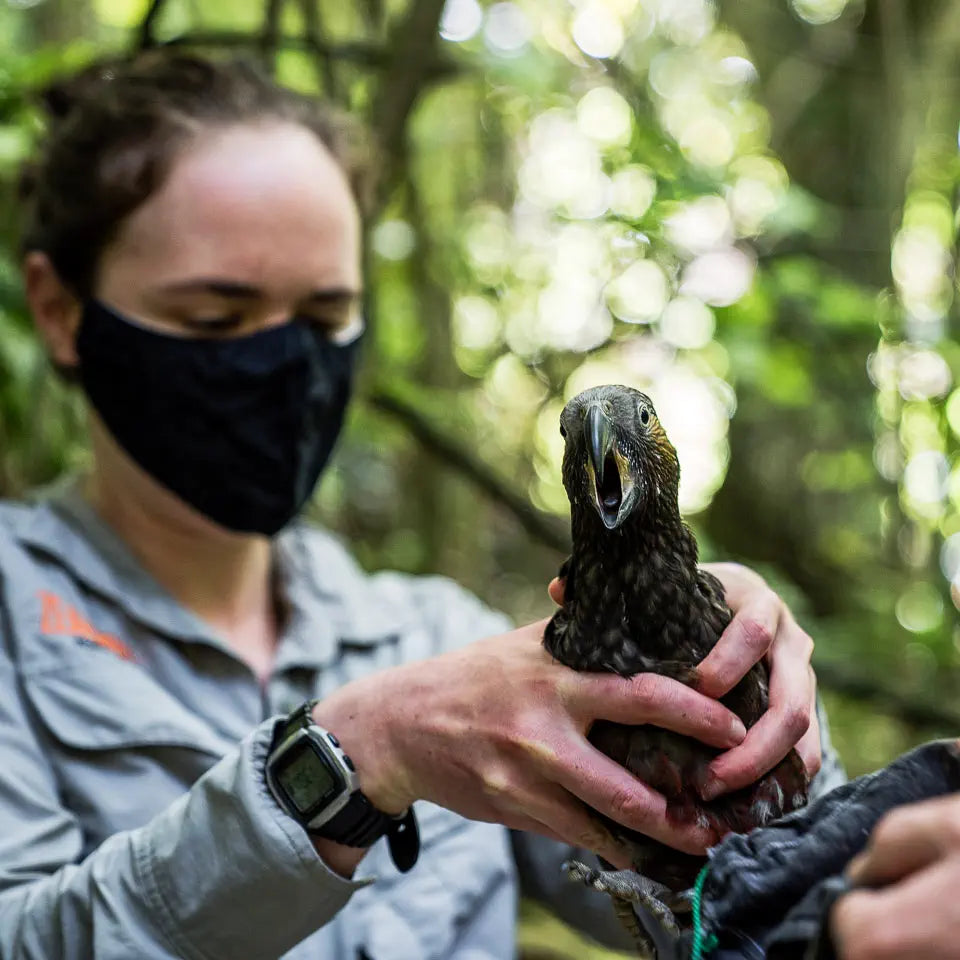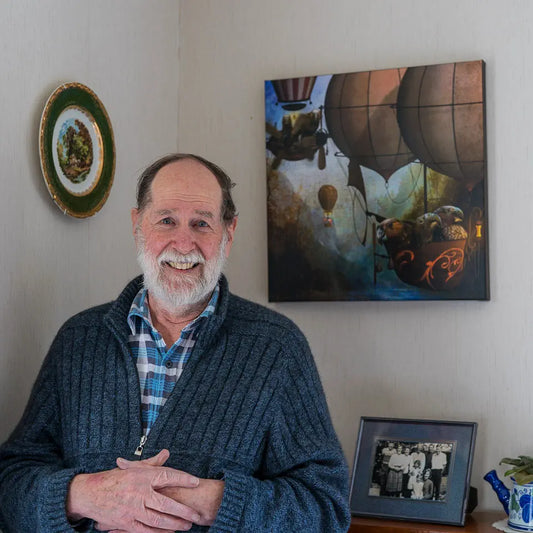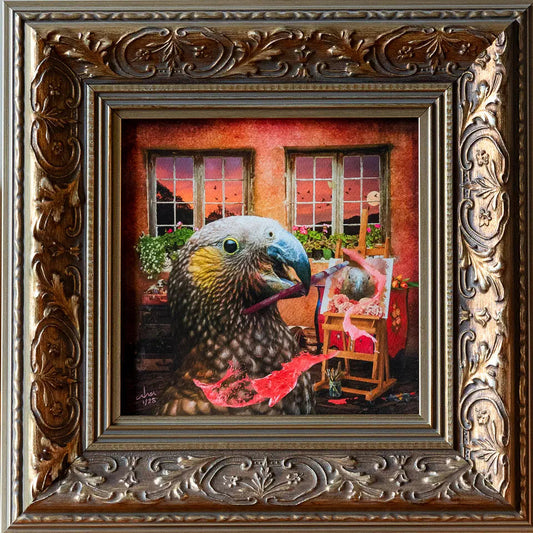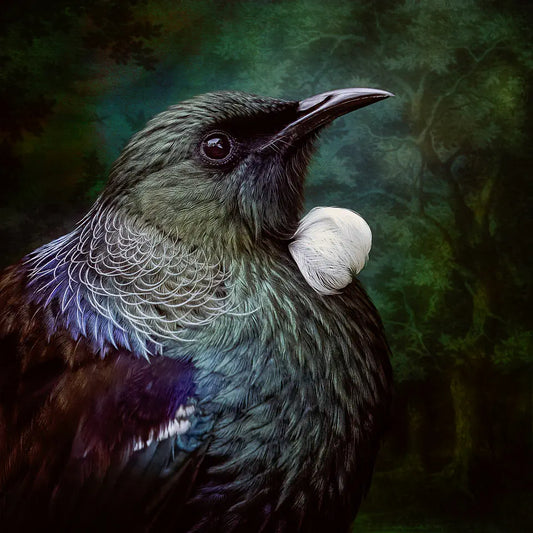
I promised kākā baby photos, so here they are!
Share
For over a decade now (how time flies!), Linton and I have helped run the kākā conservation and research program at Zealandia EcoSanctuary as volunteers. In earlier days, we were focused on the conservation aspects and the chicks were closely monitored throughout the season. Now the focus is more on research and the aim is to enable researchers to easily identify individual kākā at a distance. To do this, we attach three coloured rings to their legs when they are still nestlings. They're about six weeks old, full of personality and with nearly fully-grown legs, but without the strength in their jaws to bite hard - the perfect age!
Working hands-on with wild native birds and banding them requires significant training, permits, and certification from the Department of Conservation.
Working hands-on with wild native birds and banding them requires significant training, permits, and certification from the Department of Conservation.
At Zealandia, we have around 35 artifical nestboxes that the wild kākā can choose to use. Many choose natural nest cavities instead. We now only monitor and band those kākā in the nestboxes, rather than the entire population, so there are many unbanded kākā about.
At banding age, we take one chick out of the nestbox at a time, let them have a stress crap and then immediately pop them into a cloth bag for weighing. Kākā typically have 1 to 6 chicks, rarely 7, with most nests ending up with around 3-4 chicks varying over a 5 day age range. This nest has 4 chicks, all girls.
At banding age, we take one chick out of the nestbox at a time, let them have a stress crap and then immediately pop them into a cloth bag for weighing. Kākā typically have 1 to 6 chicks, rarely 7, with most nests ending up with around 3-4 chicks varying over a 5 day age range. This nest has 4 chicks, all girls.

"Got your nose!" Linton carefully uses vernier calipers to measure the length and width of the beak, while Rachael gently holds. This clutch of chicks were charming and well-behaved, but some chicks will wrestle and wriggle and do everything in their power to not cooperate, giving the handler a lot to manage.
Once weighed, we expose their head from the bag to measure their beak, and then remove them entirely to measure their wing, tail, and tarsus (leg bone). We also do a health check for signs of metabolic bone disease, parasites, etc. Then they are leg-banded and popped back into the nest where they immediately tell their nestmates just how terrible the outside world is!

Special pliers are used to attach the stainless steel cohort band. It takes a lot of training to get these bands to fit just right, without a gap and without sharp edges. This season's cohort colour is a gorgeous purple. Here Linton holds the kākā's toes while applying the band to her tarsus while Rachael holds the leg. Look at those gorgeous feathers on the upper leg!
A single coloured cohort band, indicating the season, is attached to one leg and two narrower coloured metal bands are attached to the other. The colour combinations are unique. The purple band is coded M for Mauve (as we already use P for Pink). The cohort band also has a unique number embossed on it. These records are kept by the Banding Office of the Department of Conservation.
Mama kākā usually turns up when she hears the skrarking of the first chick coming out of the nest. She may or may not hang around for the entire banding process. She will also call in her posse of friends, who all yell at us until they get bored. Occasionally, they'll throw sticks down on us, but the parents never think to attack us despite having a swiss-army knife for a beak!

Ellen holds the first chick to be banded for the 2021/22 season, as she prepares to return her to the nest. Watch out for RB-M (Red over Blue on the left and Mauve on the right). She'll fledge in a couple of weeks and then spend a couple of months learning how to be a kākā. Eventually, mama will bring her to the kākā feeding stations - probably by January or February - where we'll all be able to see their antics.
As of the end of last season, we've banded over 1100 kākā at Zealandia - an amazing result from a founding population of just 14 birds, twenty years ago. They're now a common sight throughout Wellington, and it gives me great joy to have them visit our garden nearly every day.
Rachael's latest kākā project is fascinating - she's using AI algorithms to recognise individual kākā from mugshots. The kākā, of course, have other ideas, and have done everything from licking the camera lens, to throwing the camera down a steep bank! She and her students have some significant challenges to overcome!
Rachael's latest kākā project is fascinating - she's using AI algorithms to recognise individual kākā from mugshots. The kākā, of course, have other ideas, and have done everything from licking the camera lens, to throwing the camera down a steep bank! She and her students have some significant challenges to overcome!










9 comments
Judi
Absolutely fascinating photo essay and glorious photos.
What amazing colours and what different characters those chicks have!!
I`m not long back from Kaikōura where most of the birds are non-native and different gull species.
Today`s Dawn Chorus with kākā skrarking was a Joy to hear!!!
Kia ora anō/Thanks again,
Rosemary”
Ngā mihi nui
Judi